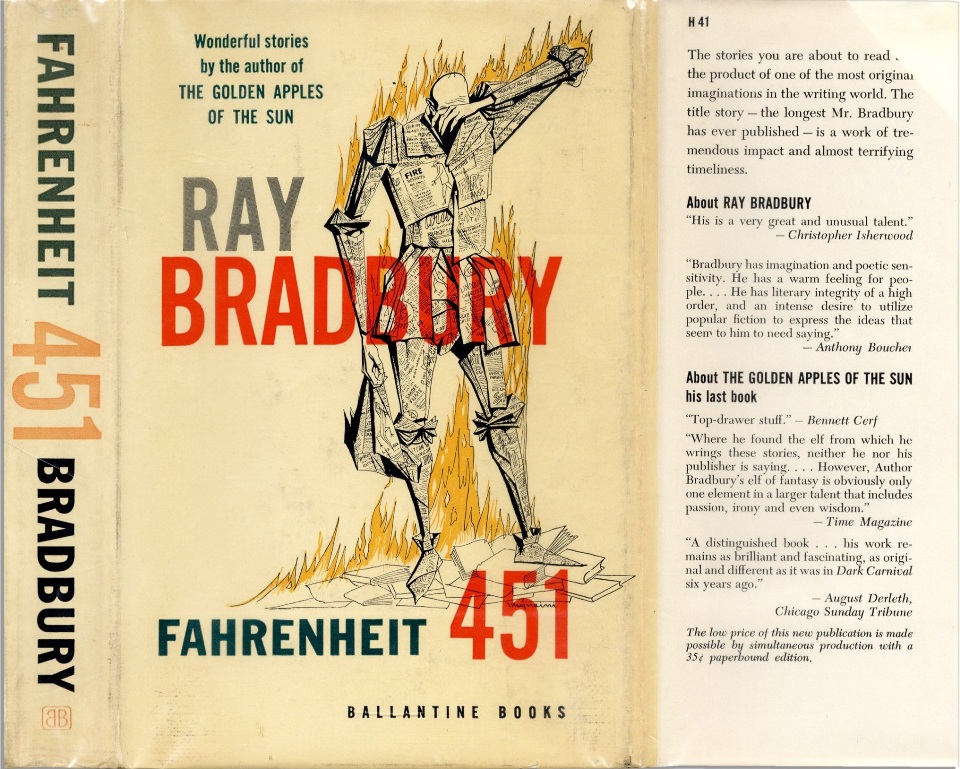История запрещенных книг.
“Some cubby-hole editors at Ballantine Books, fearful of contaminating the young, had, bit by bit, censored some 75 different sections from the novel”.
Ray Bradbury, 1979
In this dystopian vision of the future, a “fireman” is not a preserver but a destroyer, not one who douses the flames but rather one who sets things ablaze, principally books. The very title, Fahrenheit 45 7 refers to the temperature at which paper combusts. Books, it seems, are carriers of ideas – which are dangerous to totalitarians.
Ray Bradbury’s evocative tale is of a fireman who goes renegade. Charged with burning books in a futuristic US city, Guy Montag turns his back on the anodyne television screens, which hold most people in thrall, in order to seek out those who still cherish the written word.
Fahrenheit 45 is a warning about government censorship, but this did not deter the censors. In 1987, in the most publicized of several school challenges in the US, the Bay County School Board in Panama City, Florida, swept it out of the classroom for “vulgarity”. A class-action lawsuit and protests by students eventually led to its reinstatement.
Most surprisingly, in the 1960s and ’70s, the book’s publisher, Ballantine Books, released an expurgated edition of Fahrenheit 451 intended for high school students. Not only were swear words removed, but characters were manipulated and some episodes were entirely recast, all without the author’s knowledge. What was worse, for six years, from 1973-79, the expurgated edition was the only version of the novel offered for sale in the US.
On learning of the expurgated edition from a friend, Bradbury demanded that it be withdrawn. In 1980, the original edition was back in print, stating in the coda:
“There is more than one way to burn a book.”


